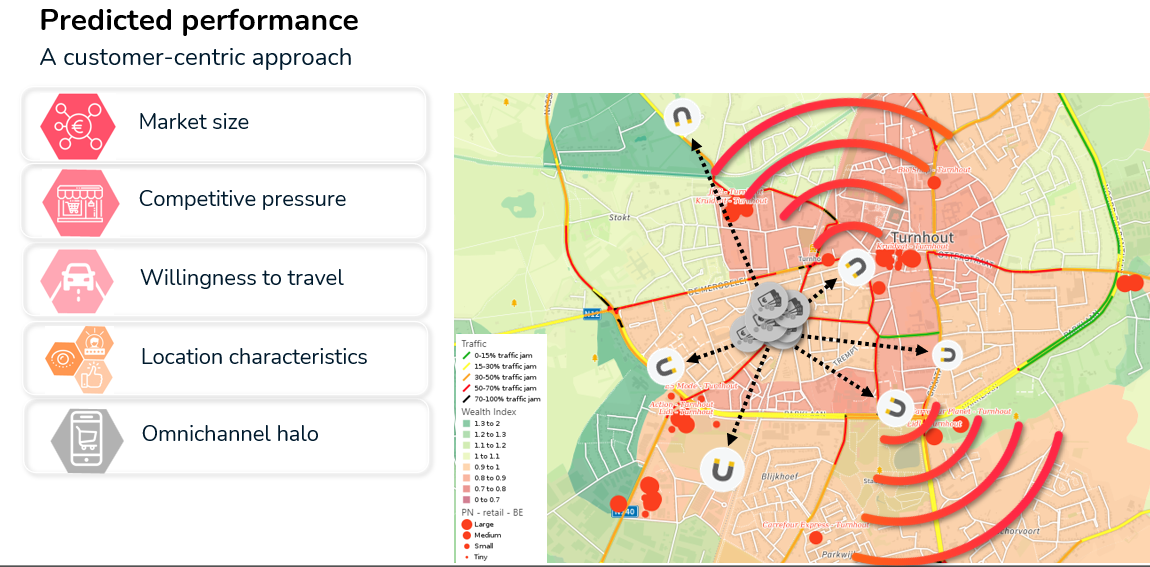Understanding the building blocks of the model
Drivers of the predictive model
To have a good understanding of the model outcomes, it is important to understand the basic drivers of our gravity model. The aim of the model is to learn from the past and by doing so, solving location strategy question concerning the future.
To fully understand your customers' behavior the model starts from a customer perspective, not from a location perspective like most methods. This way we are able to identify purchase flows and model customer behavior for each neighborhood in the country.
To calculate this complex matter, we use the methodology of the Huff-model.

In the model, the full range of alternatives (own and competitor offers) are seen as magnets that attract to the wallets of people living in a specific neighbourhood. Each magnet or alternative offer has its own particular attraction to the available market potential in the neighbourhoods.
There are a few drivers that influence the attraction of a location towards customers:
Available market size
First of all we calculate the available market size in each zone or neighborhood of the country: how much sales value is there for your market? (eg. how much money can be earned in your market?)
Competitive pressure
Secondly we will map all competitor alternatives from our set of data. With them you will have to share the available market size. We will model the competitive pressure and brand strength of each alternative.
Since we model the full range of alternatives as magnets: the strength and the size of the magnet will determine how much each alternative can attract.
Therefore it is essential to correctly install the following parameters that determine these forces;
Willingness to travel
A lot can be learned from knowing where your current customers come from. This can be done by analyzing CRM or exit surveys. By linking geographical coordinates to each of your customers, we can compare the purchases they make in your existing locations to the same level of market size and socio-demographic characteristics.
Location Quality
Besides the willingness to travel of your customers towards your locations, specific location characteristics will also play an important role in why certain locations are more attractive than other closer located alternatives. A location can be more attractive because of e.g. free parking, a larger product range or a better customer service. It's important to identify those location characteristics and analyze their impact to determine the final strength of a location.
Now, based on the final strengths of each magnet, the available market size will be divided among the various alternatives.
Omnichannel
All of this also works for an omnichannel environment, which allows us to make predictions for the online channel.
In areas where physical market shares are high, we noticed that online also has higher sales values. The reinforcing effect of the physical sales channel on the online sales channel(s) is called the halo effect. How big this effect is depends on the sector in which you're active, but its an important factor to take into account for the complete business case.
Important! you can read all of this information in the delivery presentation that you received from your consultant: this presentation entails all relevant information and important dynamics for your platform specifically.
We invite you to watch this explanatory video, which provides a detailed illustration of how the information presented in the article translates and applies within the platform :
